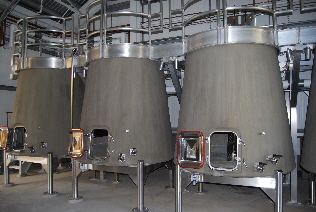At least they typically aren't worth drinking. So I was quite excited when I recently sat in on a Pinot Noir class taught by a Master of Wine candidate at my favorite local wine shop (Tim's Wine Market for any local Central Floridians) and saw a $13 Single Vineyard Pinot Noir listed on the syllabus.
So why is Pinot Noir so consistently more expensive then other varietals. Only about 50-60% see oak and the Sideways movie wasn't that good was it? So why the price hike?
Well what else? It comes back to economics just like your teacher said it would. Pinot Noir is a fickle grape that naturally constrains supply. In addition to perpetual low yields, Pinot Noir's thin skins (which give it that lighter red color) are more susceptible to disease and mold in the vineyard.
On the demand side, Pinot Noir is delicious!
 Those thin skins mean that Pinot Noir picks up more of the "flavor of the place" or terrior such as soil, climate, winds, culture, etc. This is why you find wine nerds typically specify their Pinot preferences - and when it comes to the queen of grapes, I'm a California girl myself.
Those thin skins mean that Pinot Noir picks up more of the "flavor of the place" or terrior such as soil, climate, winds, culture, etc. This is why you find wine nerds typically specify their Pinot preferences - and when it comes to the queen of grapes, I'm a California girl myself. So there you have it: Pinot Economics 101 - happy Prof. Carvell!?!
Darcie Kent's 2011 Rava Blackjack Vineyard Pinot Noir showcased a fairly condensed candied red fruit nose; however, on the palate this wine is completely dry. Special K's dried red strawberries make another appearance along with cherries, wet round stones, floral and cardamom. That last tasting note tells us this wine did see some oak aging, and is personally what I enjoy about California Pinots.
So get this wine while you can - because for all we know, this myth of the wine world is heading back into our dreams for a while....










